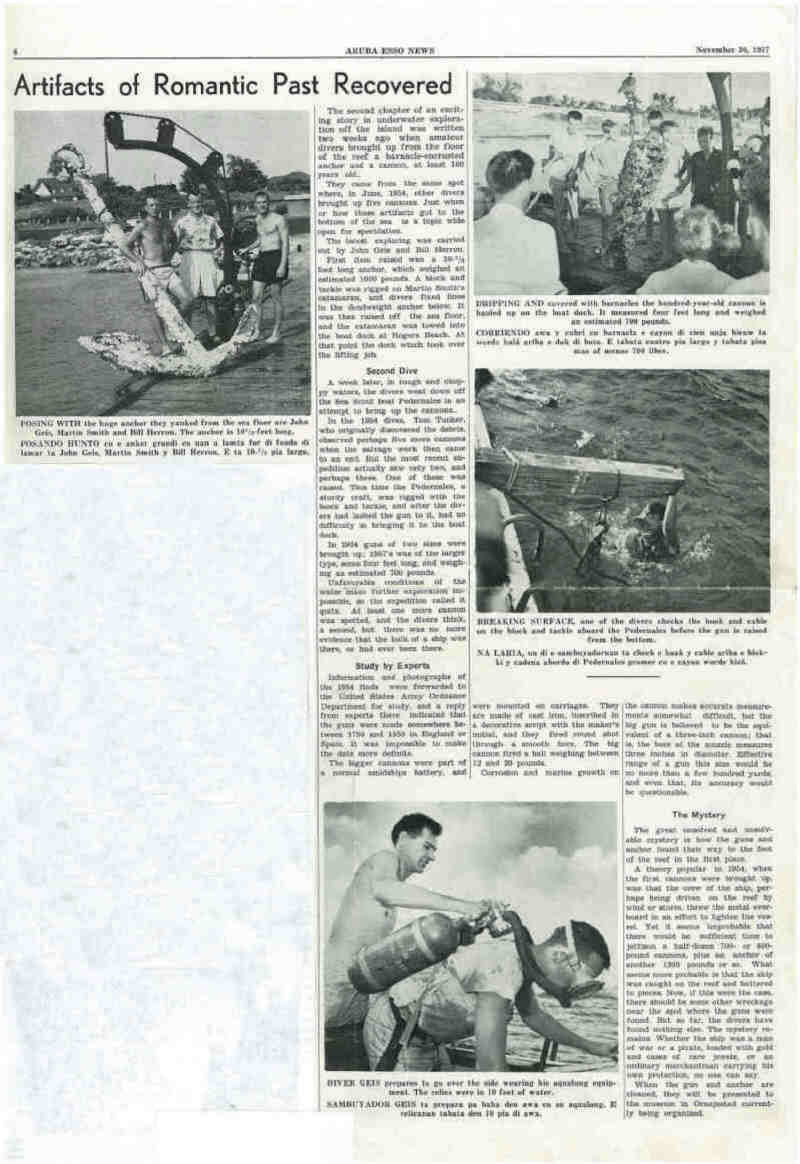MISSING ANCHOR AND CANNON
ANCHOR, ANCHOR, WHERE IS THE ANCHOR OR THE CANNON FOR THAT MATTER? CAN YOU HELP?
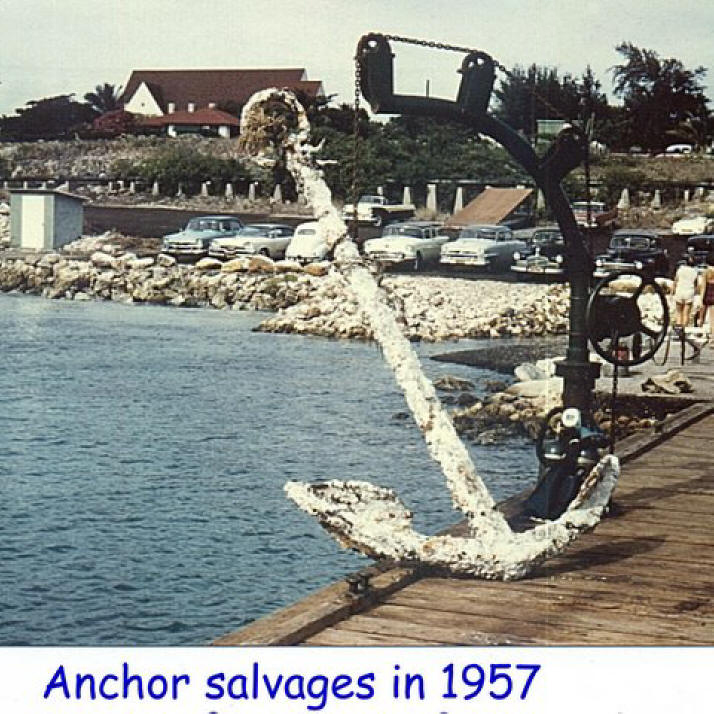
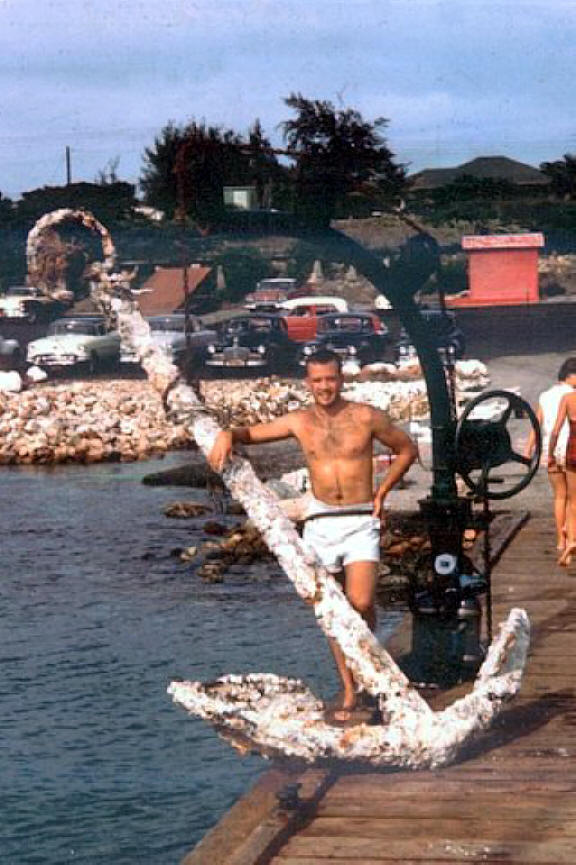
John Geis standing behind the anchor. The davit was needed to pick up the artifacts when we dropped them from the boat used for the salvage operations.
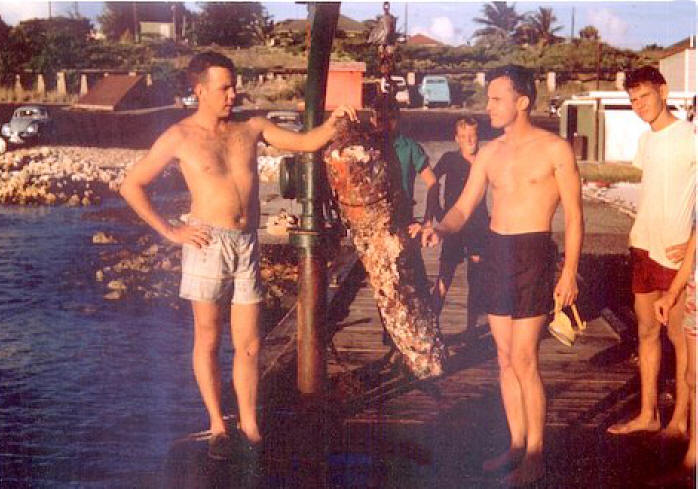
A. John Geis, left of cannon and Bill Heron on the right. Can anyone identify the kids in the background? Photo taken in October 1957.
FOLLOWING IS JOHN GEIS ACCOUNT OF HOW THE ANCHOR AND CANNON WERE FOUND, BROUGHT TO THE SURFACE AND THEN CLEANED AND PRESERVED.
THE FOLLOWING WAS WRITTEN BY JOHN GEIS AND SENT TO LARRY RIGGS WHO POSTED IT ON HIS LAGO BULLETIN BOARD SEVERAL YEARS AGO.
I was the diver of the group that salvaged a 10-½ ft. anchor and a 700-lb. cannon beyond the Rogers Beach reef in 1957. The origin could not be determined, but Smithsonian, Lloyds of London, and the Seville Museum all stated that they were from the 1790-1810 era. After the items were thoroughly acid-washed, caustic treated, washed and varnished, they were designated to be given to the to-be-built museum in Oranjestad. The Esso News covered the story with a two-page spread on November 30, 1957. (I still have a copy) I left Lago in 1959.
In 1995, we had a family reunion in Aruba and visited the Aruban Museum at the old Fort Zoutnan to see the anchor and cannon. They were not there, and the museum director and National Historical Archives director knew nothing about them! Old photos and the Esso News story proved their existence and started an interest in locating them. Many sites that displayed cannons and/or an anchor were visited, but none of the items were the correct size or of the proper vintage. Aruba Today wrote a feature article with photos requesting local help in finding the artifacts on June 29, 1995. During subsequent visits in 1/99 and 10/00, I again visited museum and archives officials and learned that their whereabouts was still a mystery.
With the Internet and over 400 names worldwide in the Lago alumni address file, the Aruba government and I are asking for your help in locating these missing artifacts. Since visible locations on the island have all come up empty, maybe they were shipped out with some Lago employees' household goods during the shutdown of the refinery. If you have any knowledge as to their location, an e-mail to me (ajgeis@worldnet.att.net) and Raymond Hernandez, Director National Historical Archives, (nathisarchief@setarnet.aw) would be appreciated. My interest is solely to have those items displayed in the Aruba Museum, not rusting away in some Lago retiree's yard!
TO DATE THE ANCHOR OR CANNON HAS NOT BEEN LOCATED.
PLEASE - IF ANYONE KNOWS THE WHEREABOUTS OF THESE ITEMS PLEASE USE THE E-MAIL ADDRESS ABOVE OR SEND ME AN EMAIL. JOHN IS RIGHT, THEY BELONG TO ALL THE PEOPLE OF ARUBA.
THANKS, DAN JENSEN
IF THE ANCHOR OR CANNON ARE IN THE UNITED STATES BY CHANCE AND YOU EMAIL ME I WILL DRIVE AND PICK THEM UP AND ARRANGE TO GET THEM TO ARUBA. I WILL DO THIS WITH NO QUESTIONS ASKED AND NOT REVEAL WHO OR WHERE THEY WERE. IF THEY HAPPEN TO BE IN EUROPE OR SOME PLACE ELSE IN THE WORLD STILL EMAIL ME AND THE SAME OFFER GOES, I WILL GET SOMEONE TO PICK THEM UP, AGAIN, NO QUESTIONS ASKED.
DAN JENSEN
The following is the Aruba Esso News article about the anchor and canon which John sent to me as an email attachment. I am going to get it on a disk and then maybe when I put it on the page you will be able to read what is written, it will have to come via "snail mail". THE DISK ARRIVED, HERE ARE THE IMPROVED COPY.
THE FIRST FULL PAGE CAN BE MADE LARGER BY CLICKING ON THE COPY. THEN CLICK ON THE LARGE COPY TO RETURN.
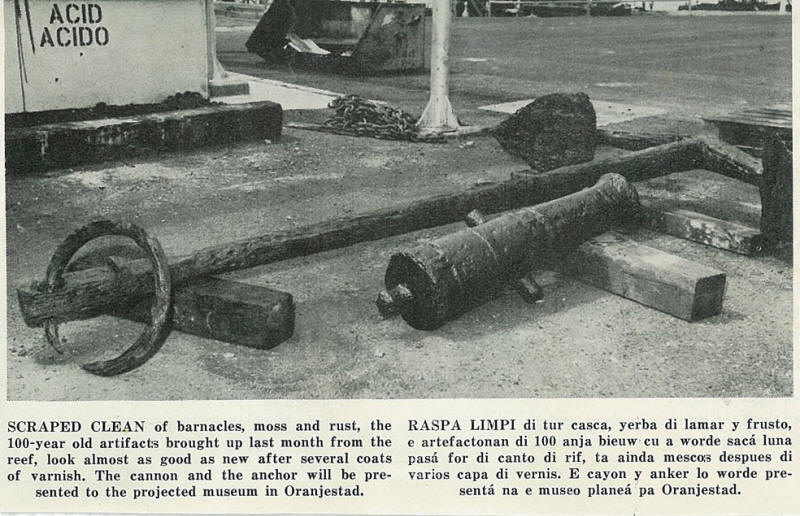
CLICK ON THIS LINE TO SEE STORY ABOUT CANNONS FOUND EARLIER BY TOM TUCKER
CLICK ON THIS LINE TO SEE STORY ABOUT CANNONS FOUND IN 2008 IN SAME LOCATION BY STEVE FREMGEN
